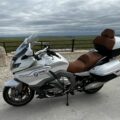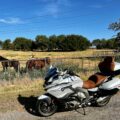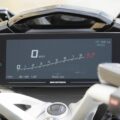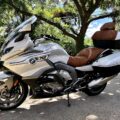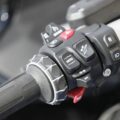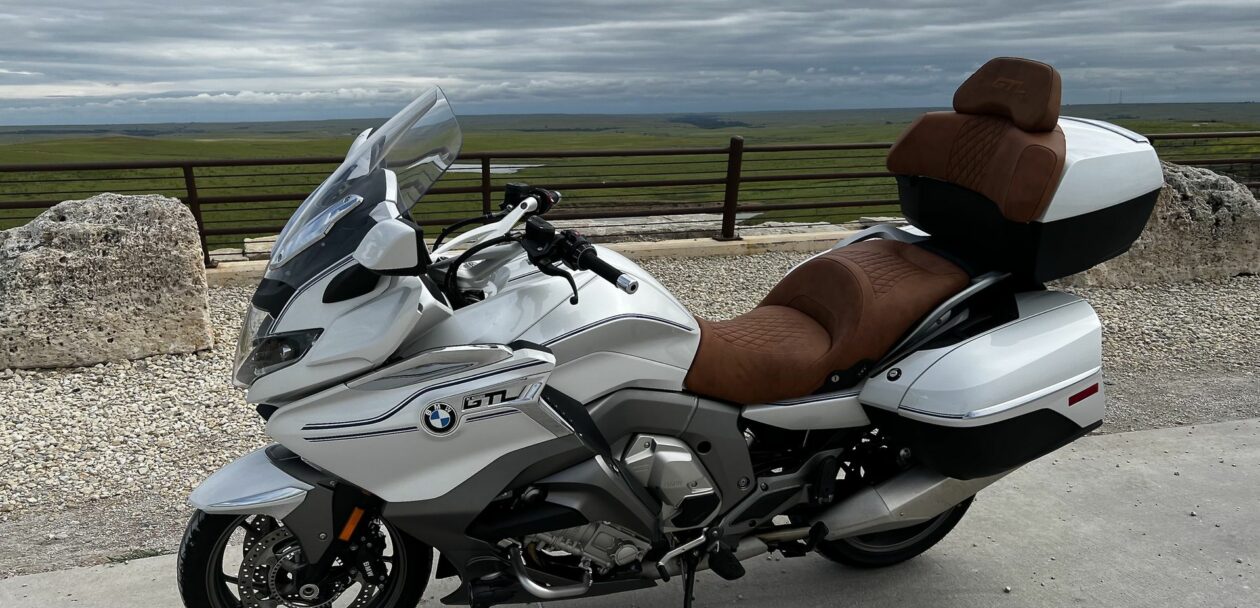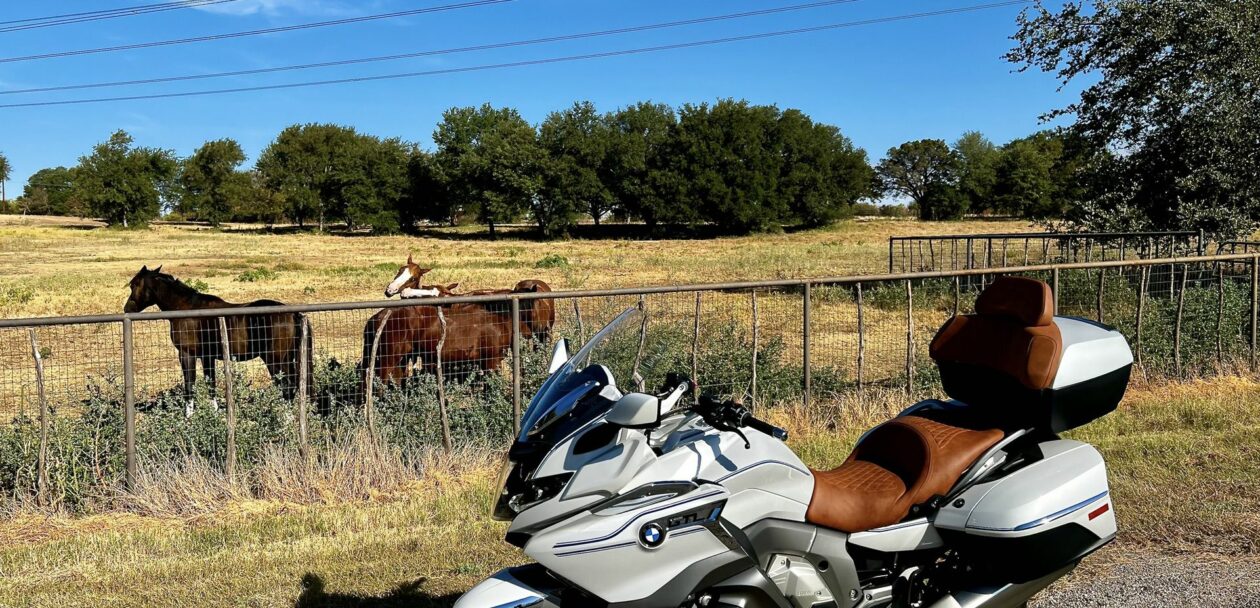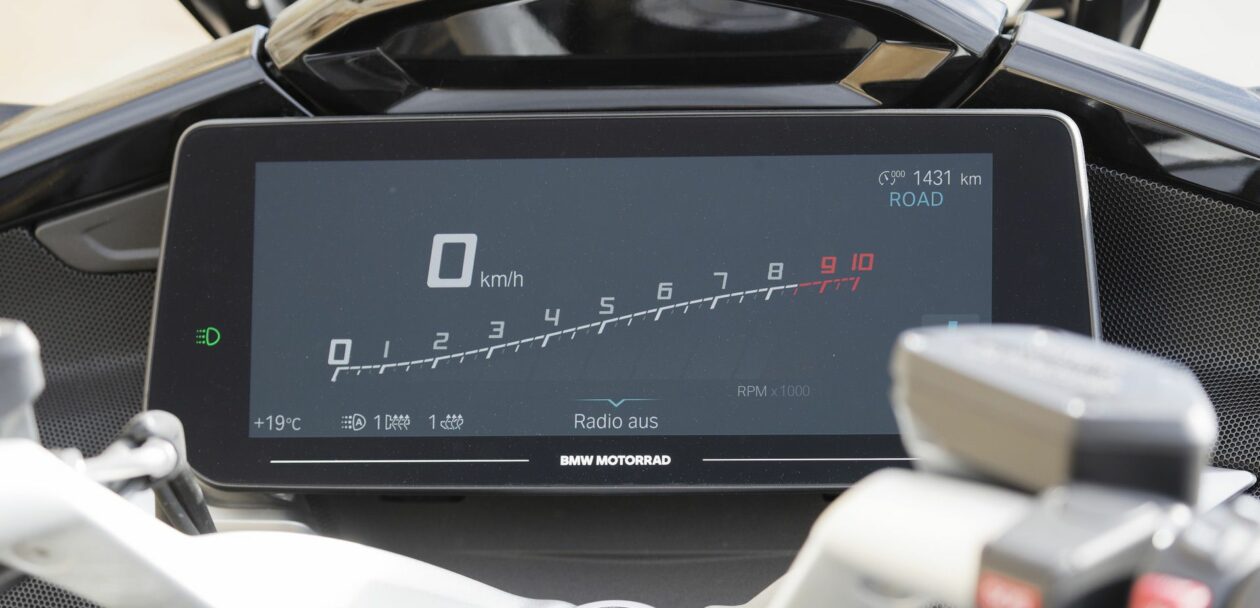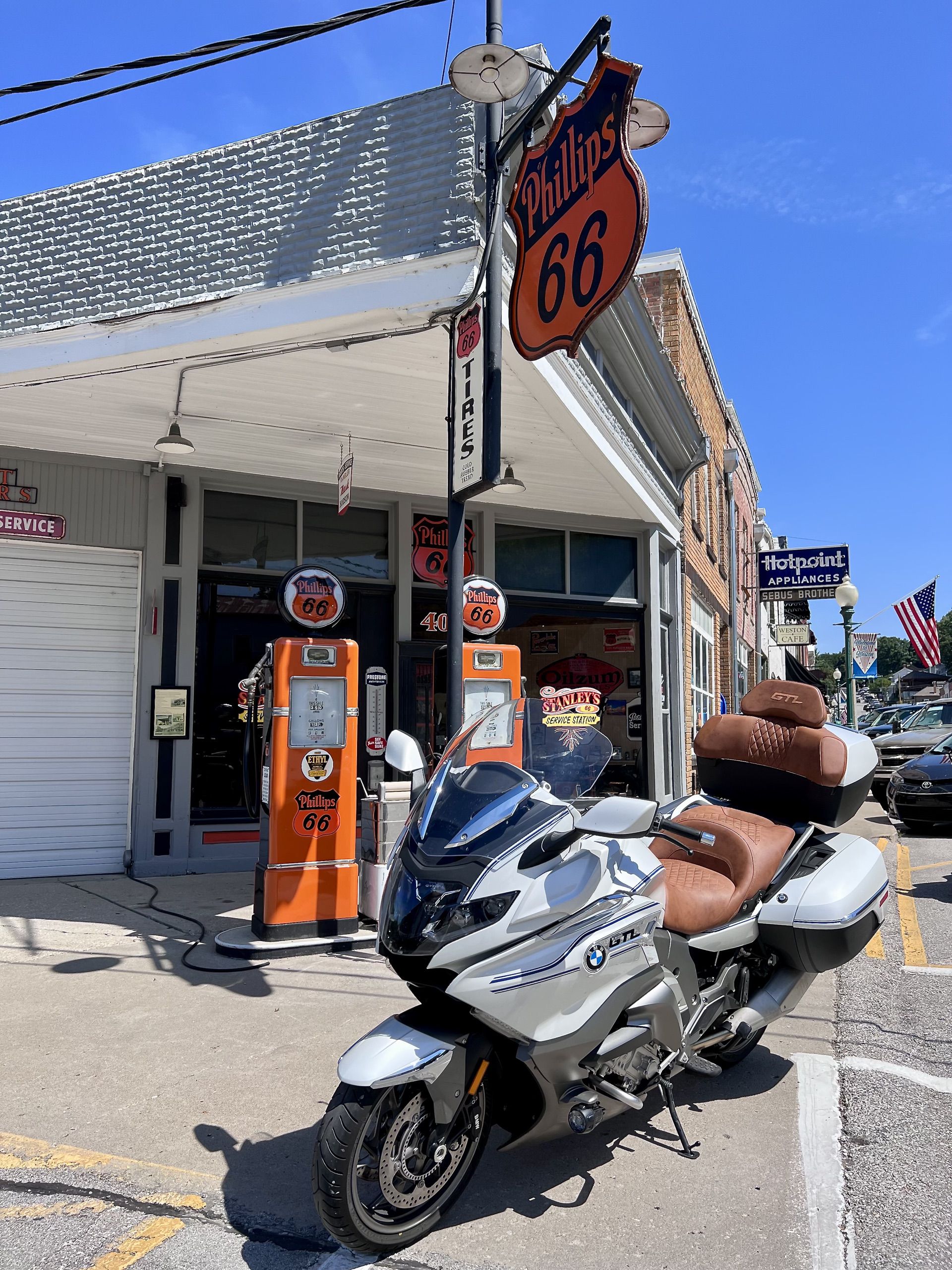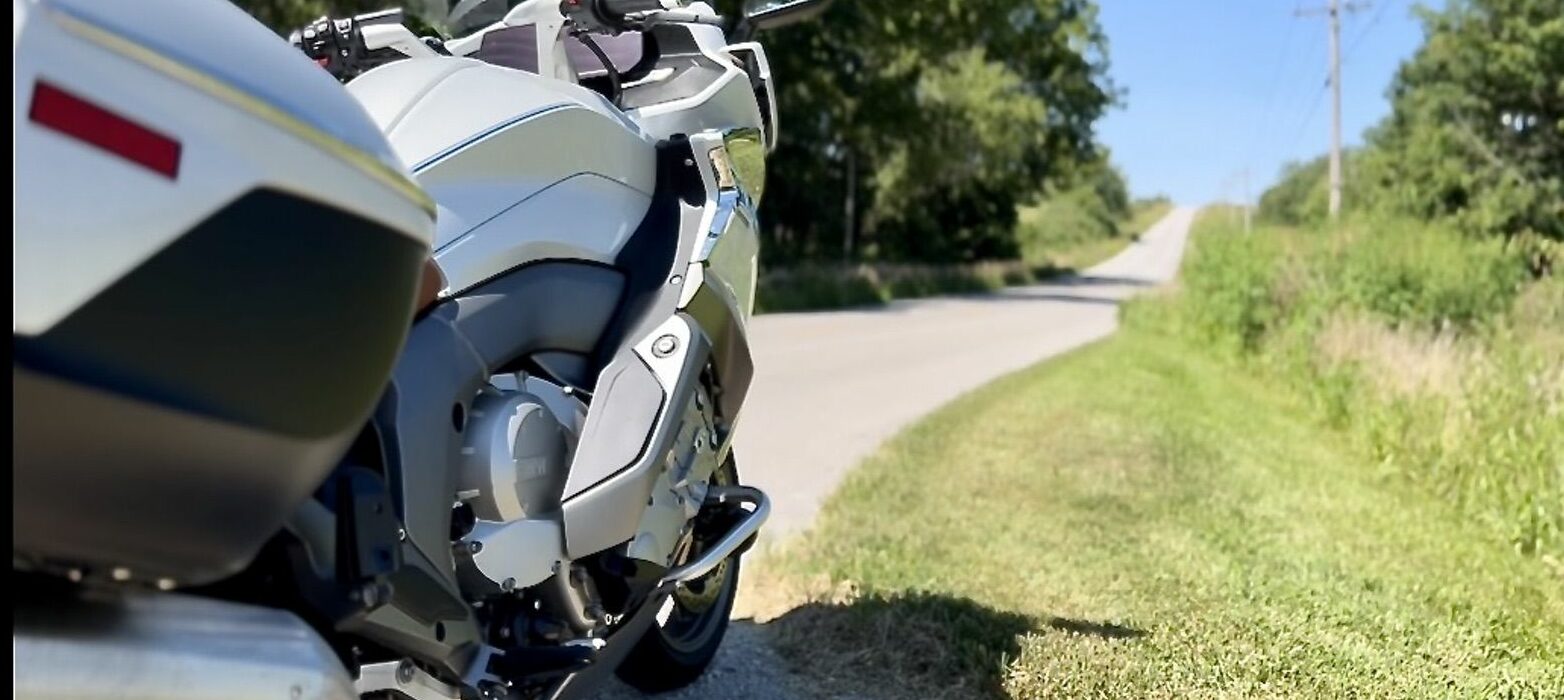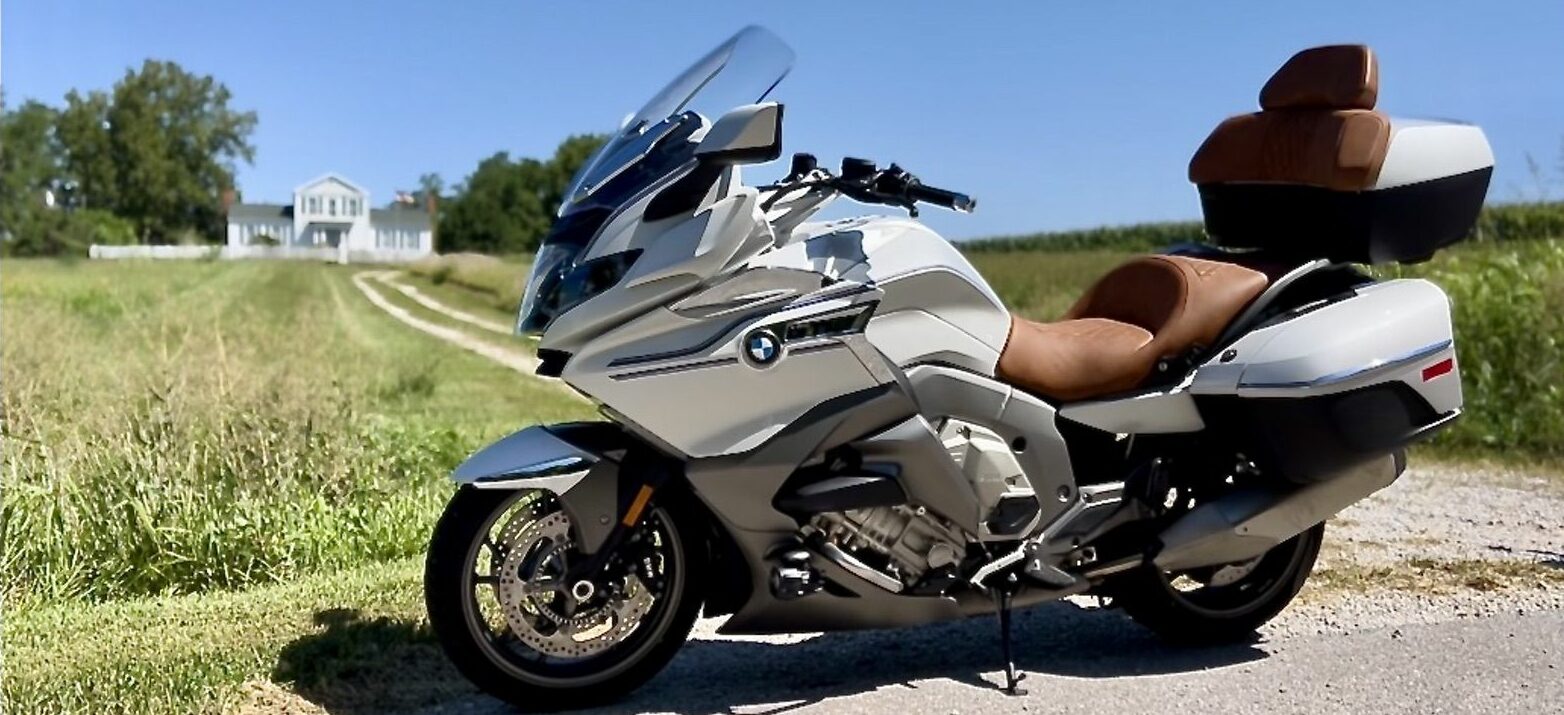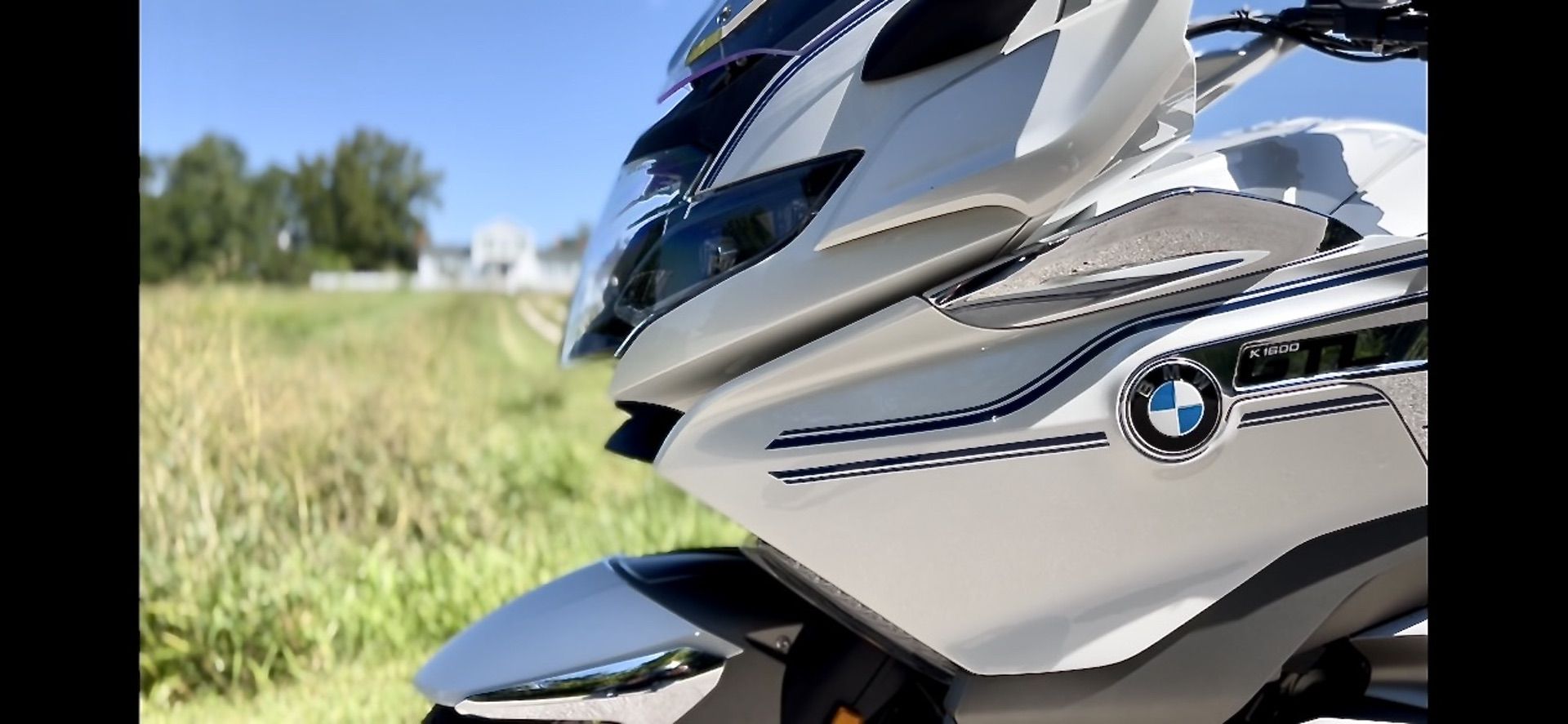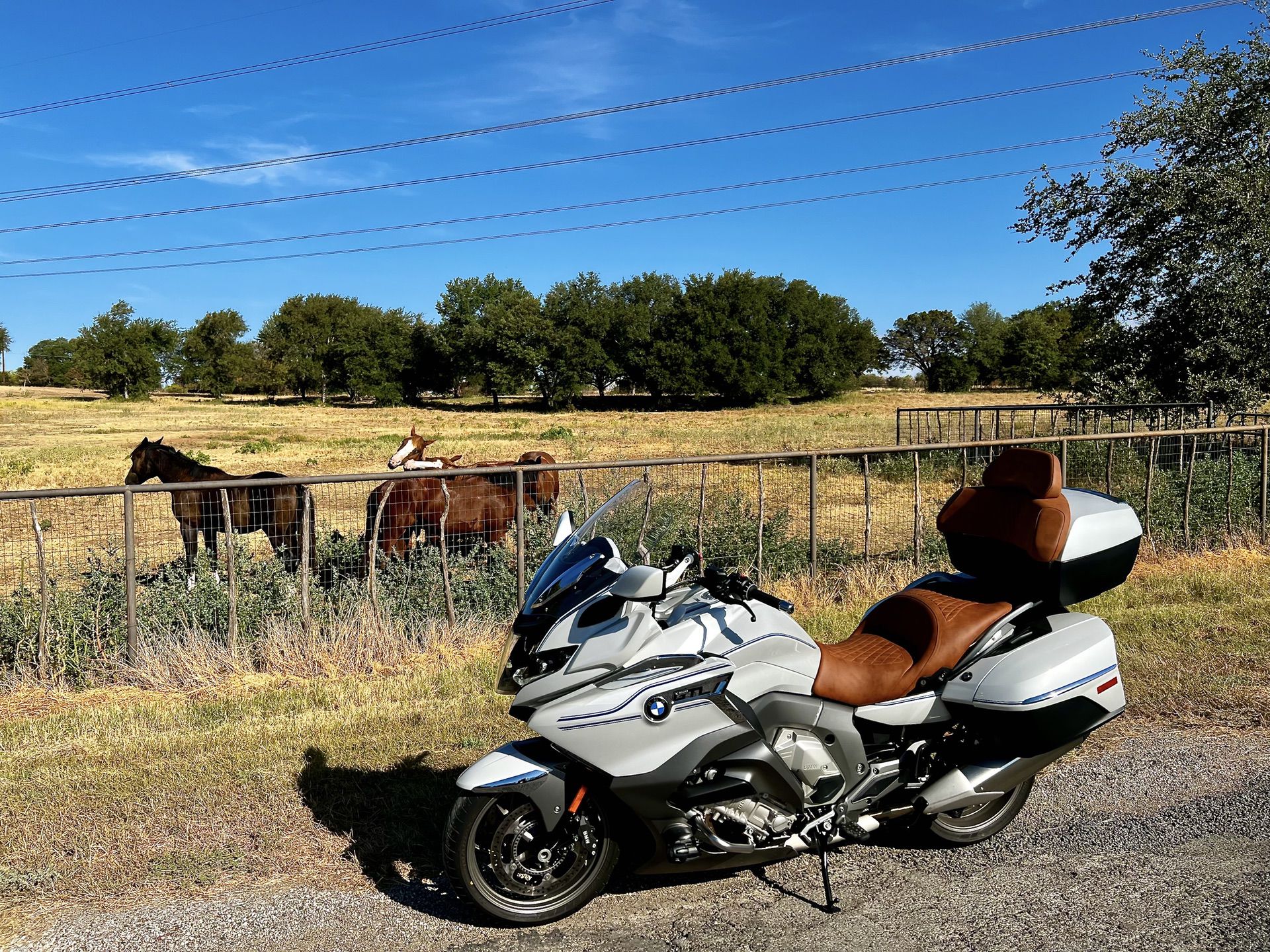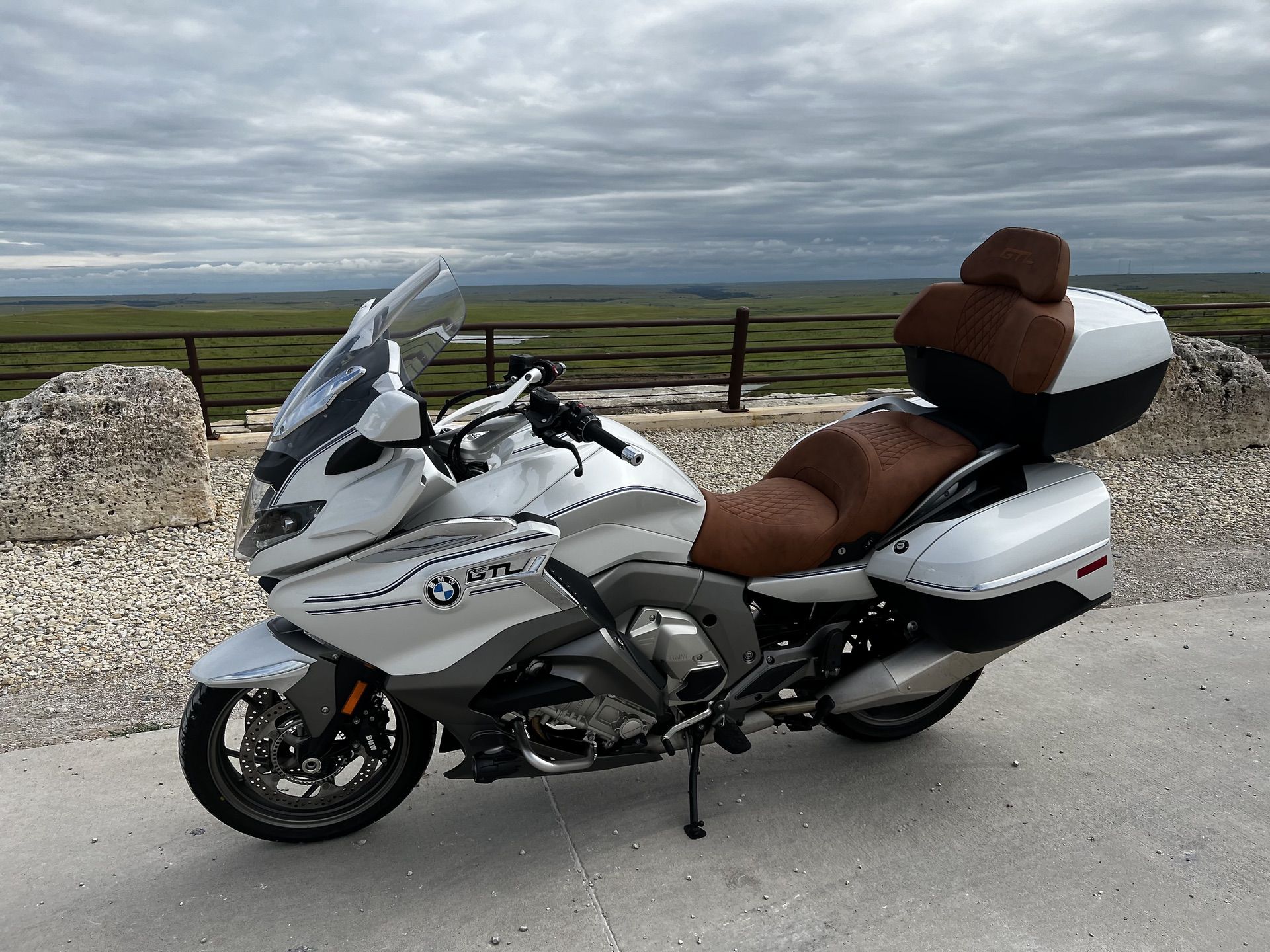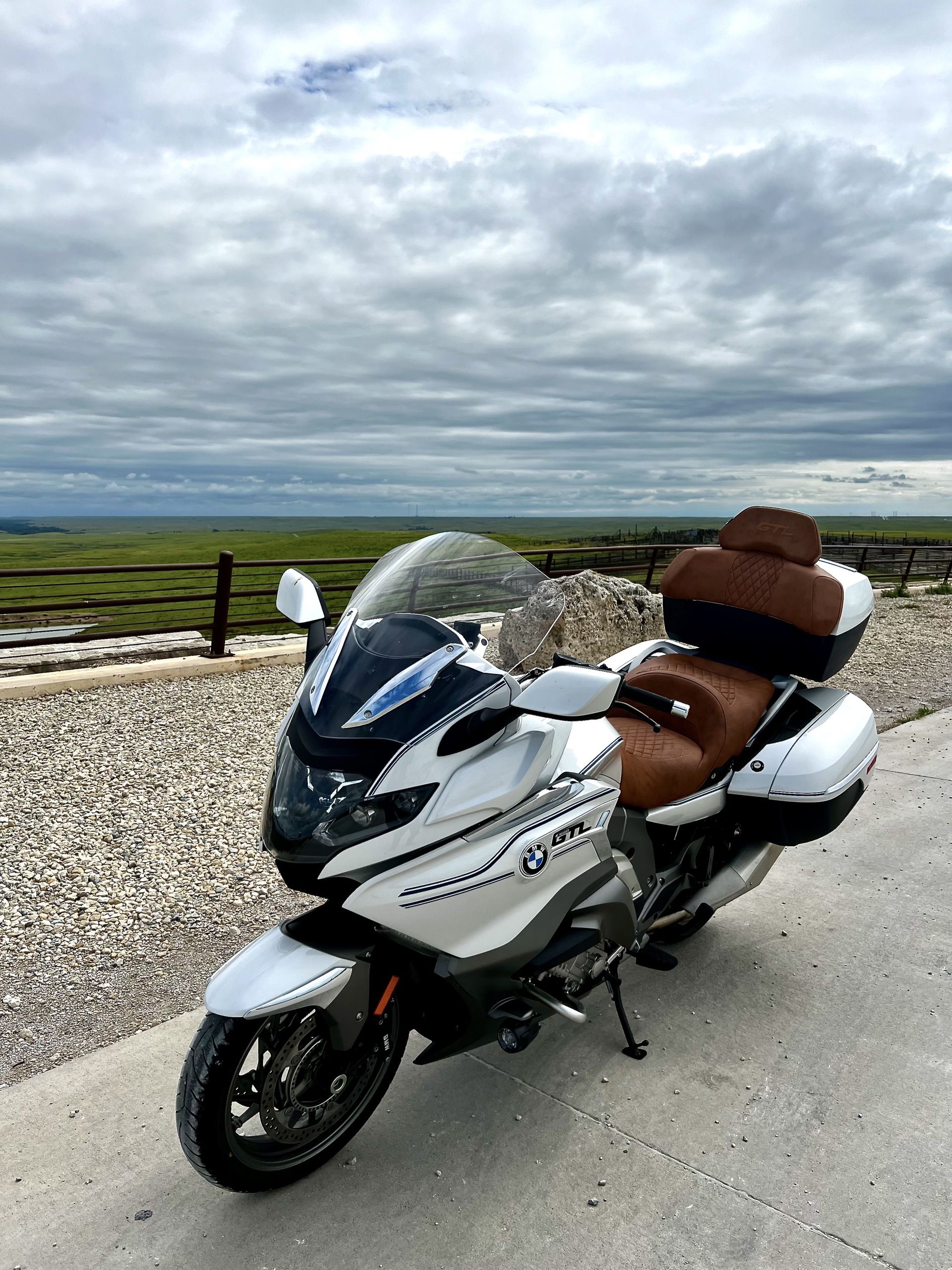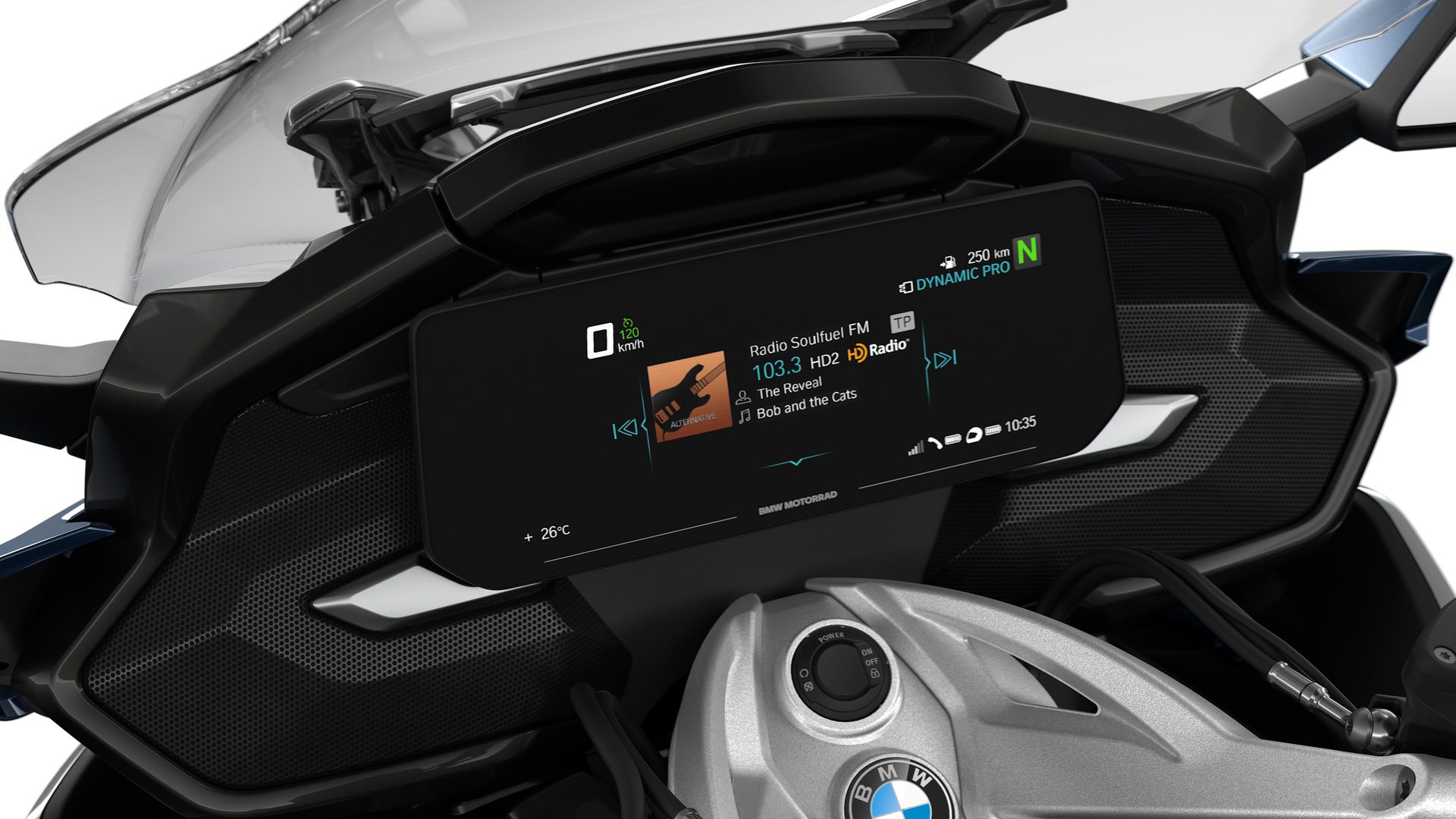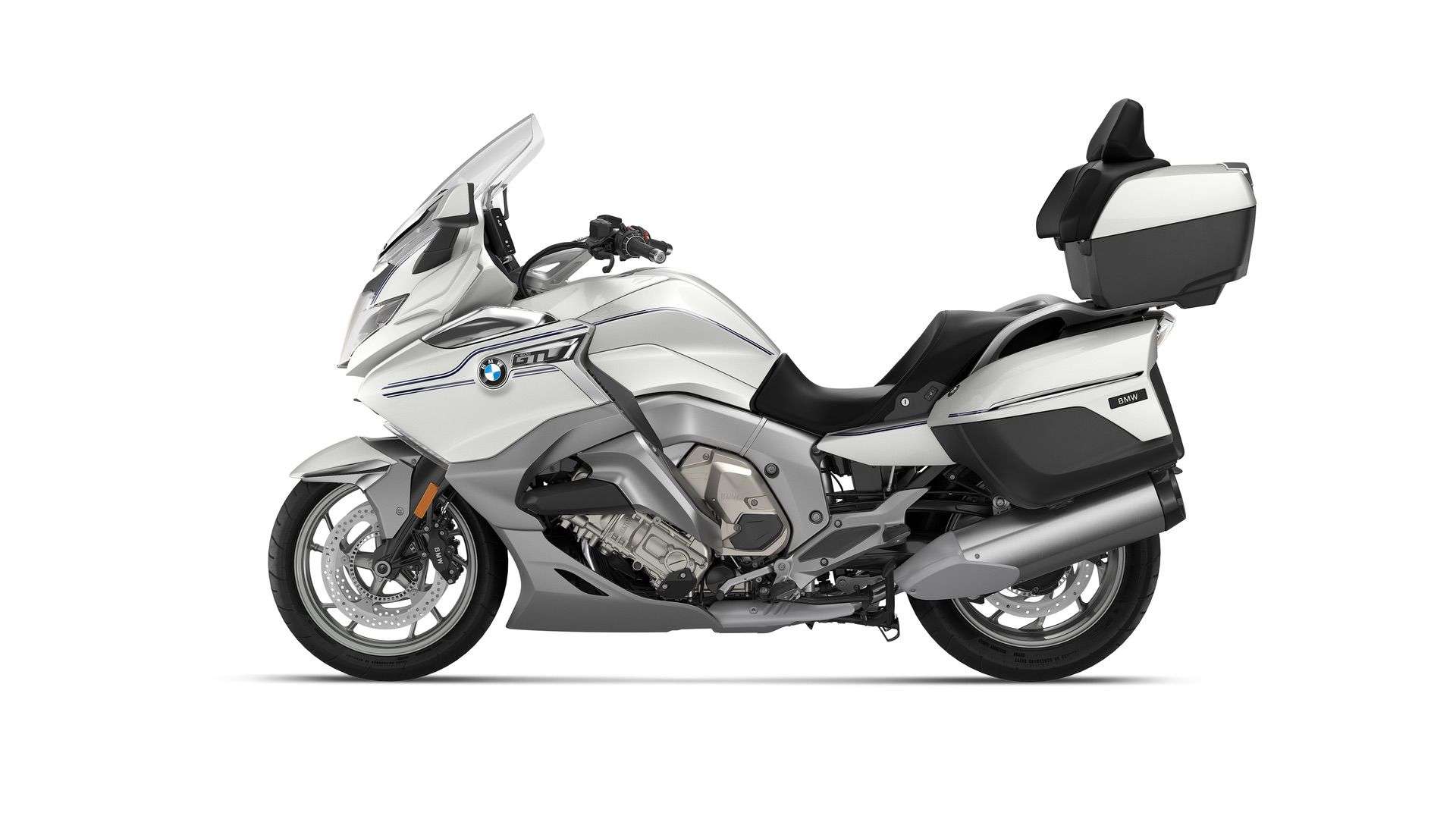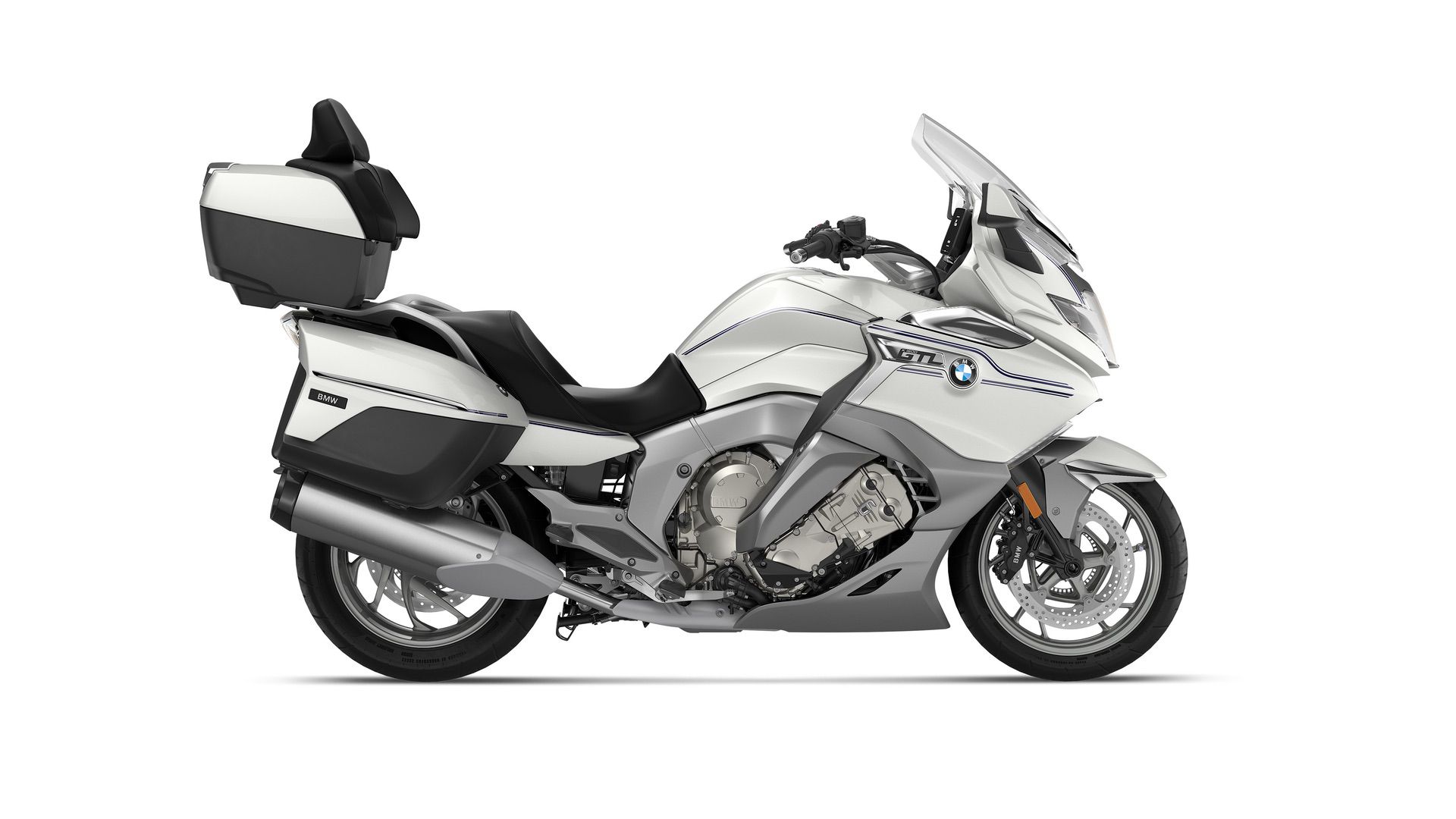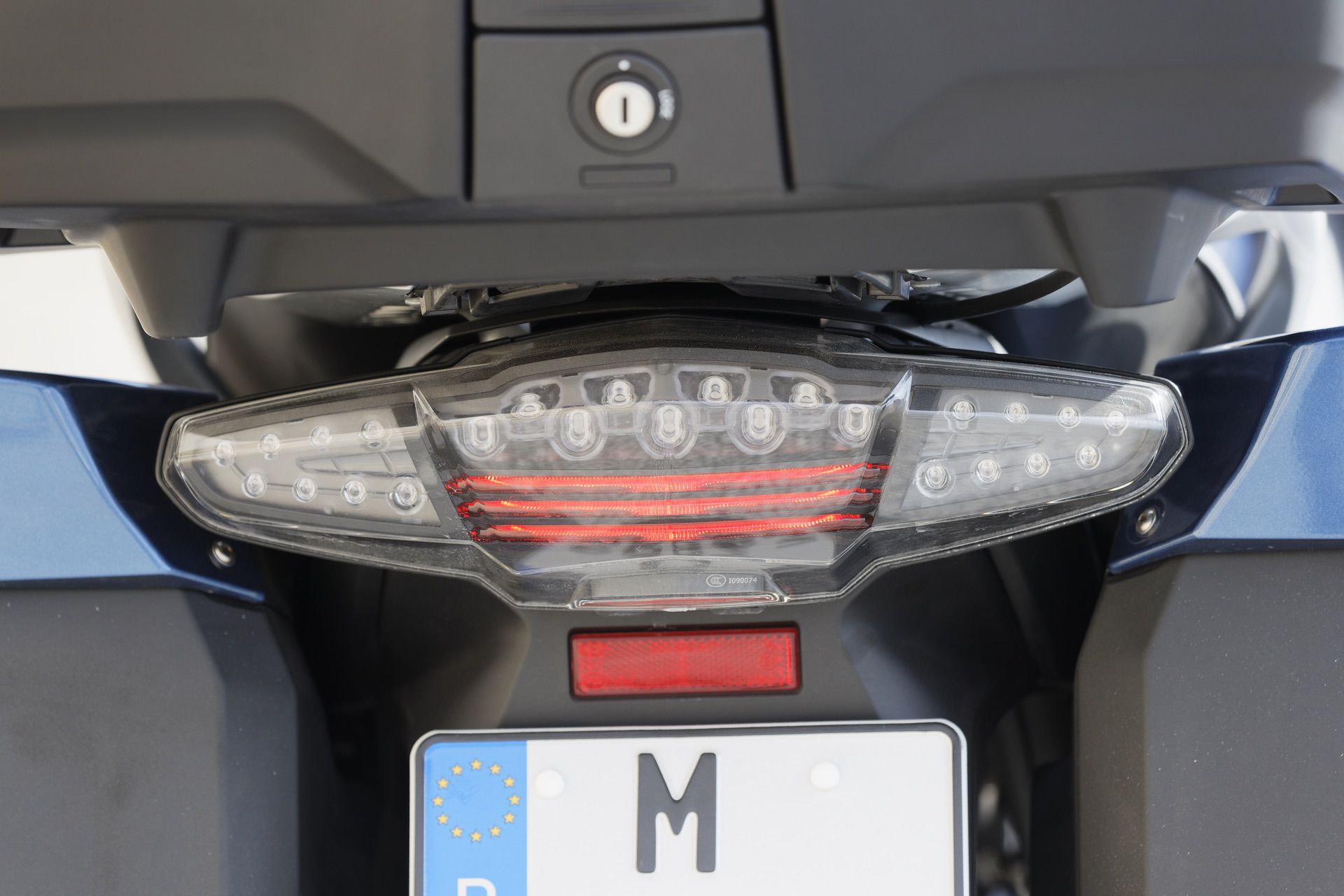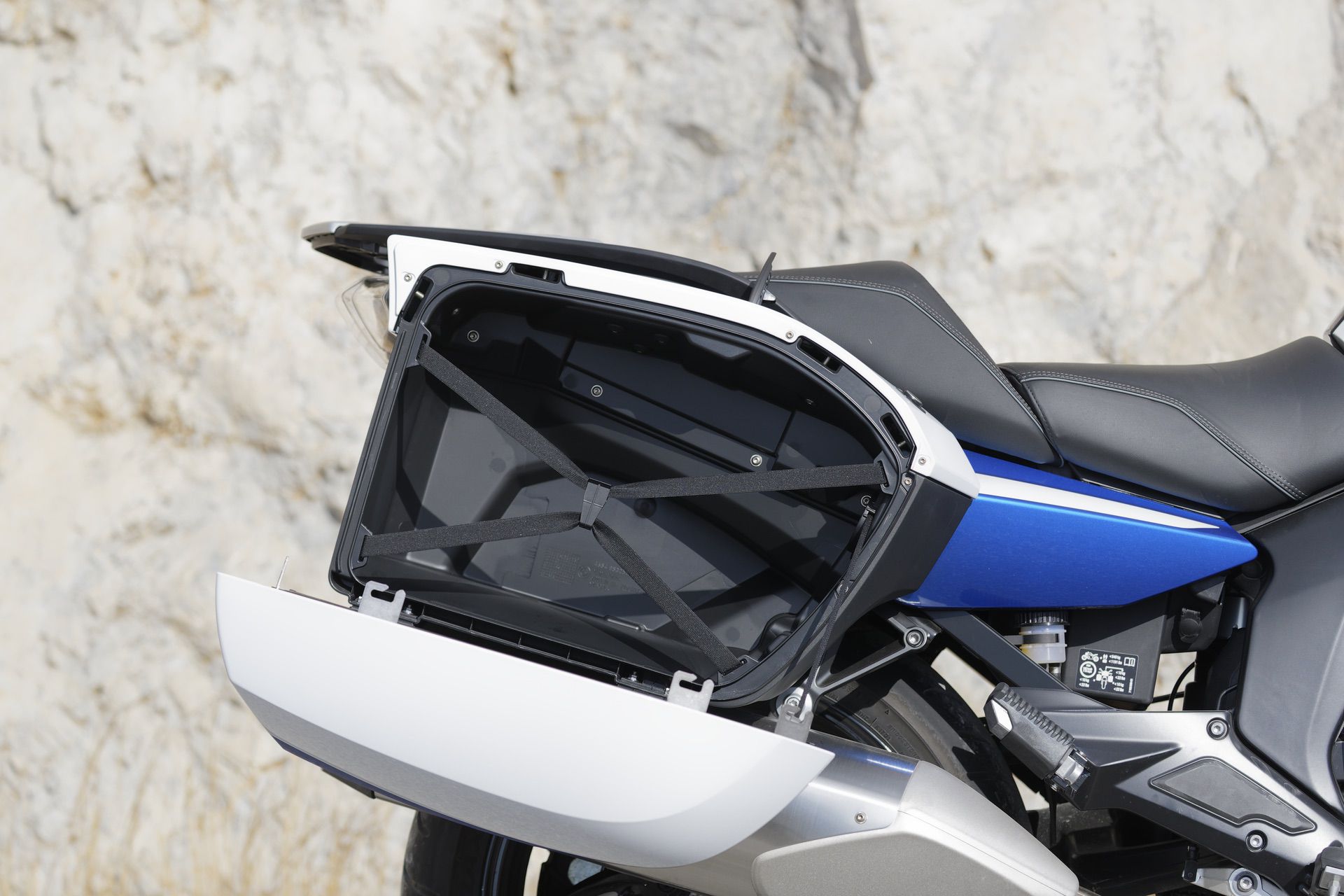Can a motorcycle cosset? That seems the question BMW Motorrad is asking with the new K 1600 GTL, BMW’s flagship touring motorcycle. In the hierarchy of BMW automobiles, the 7-Series has long occupied the top step in terms of luxury and ability to effortlessly cover long distances in style. Each iteration seems ever more powerful, technically advanced, trendsetting in design, and outfitted to cover long distances with minimum fuss and maximum comfort. In other words: Cosseting.
So why am I mentioning this in a review ostensibly about a motorcycle? Because the K 1600 GTL is the closest thing to a 2-wheeled 7-Series that BMW Motorrad has yet built.
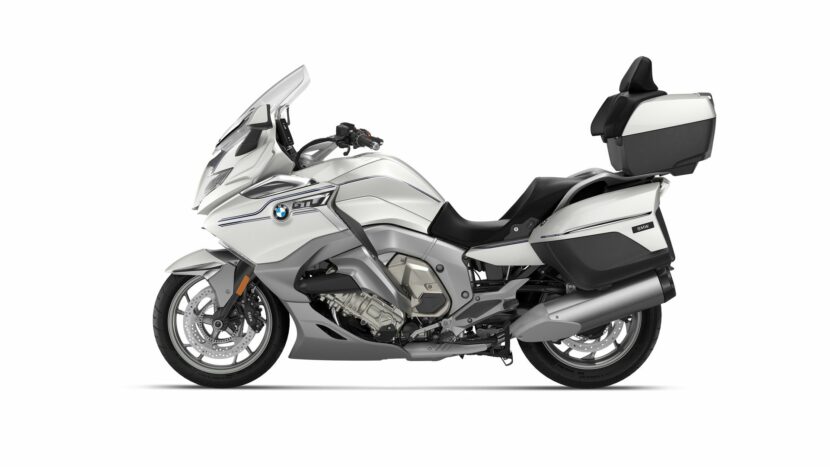
Released as a new model in 2011, the K 1600 has been BMW’s motorcycle standard-bearer ever since, as well as the Motorrad’s showcase for innovation. Electronically adjusted suspension? Adaptive headlights? Throttle-by-wire? Multiple ride modes? All pioneered on BMW’s K 1600 bikes. Newly updated for 2022, BMW started delivering this next generation uber-K bike to European customers late in 2021, and it’s now available here in the United States.
Over the course of several weeks, I had the opportunity to experience the K 1600 GTL in many different environments: From the urban landscapes of Dallas and Fort Worth to the rolling ranchlands of rural north Texas; from the treed hillscapes of eastern Oklahoma to the undulating prairies of southern Kansas and western Missouri; and back again. And after more than 1000 miles in all manner of weather and on a variety of road types, I came to anticipate and enjoy each mile on the renewed big Beemer immensely.
Buttery Smooth Inline-6 Power

There are officially four models in the K 1600 family, but really there are two models with two variations apiece: The GT and GTL, and the B (for “Bagger”) and Grand American. The differences are subtle, though meaningful. Think of the B and Grand American as the longer and lower cruiser twins of the more mature GT and GTL and you’ll be on the right track. And the GTL and Grand American versions are more passenger-friendly than the more solo-oriented GT and B bikes. The GTL is the ultimate luxury-touring model of the family and adds to the overall package nicely integrated rigid cases (top and sides) for ample and usable storage.
Regardless of the version, power is provided by one of the sweetest engines ever to grace a motorcycle, an oil/water-cooled 1649cc inline-6 that makes 160-hp at 6,750rpm and a whopping 132.7/ft/lbs of torque at 5,250rpm. This engine debuted in the K 1600 line in 2011 and has been steadily updated and improved ever since. Like BMW’s venerable inline-6 automobile engines, this one is linear and supremely smooth. Riders more accustomed to the shimmy of BMW’s horizontally opposed Boxer engines will likely find the buttery smoothness of the GTL’s engine a bit disorienting; it’s a progressive, drama-free buildup of power and torque that seems almost electric.
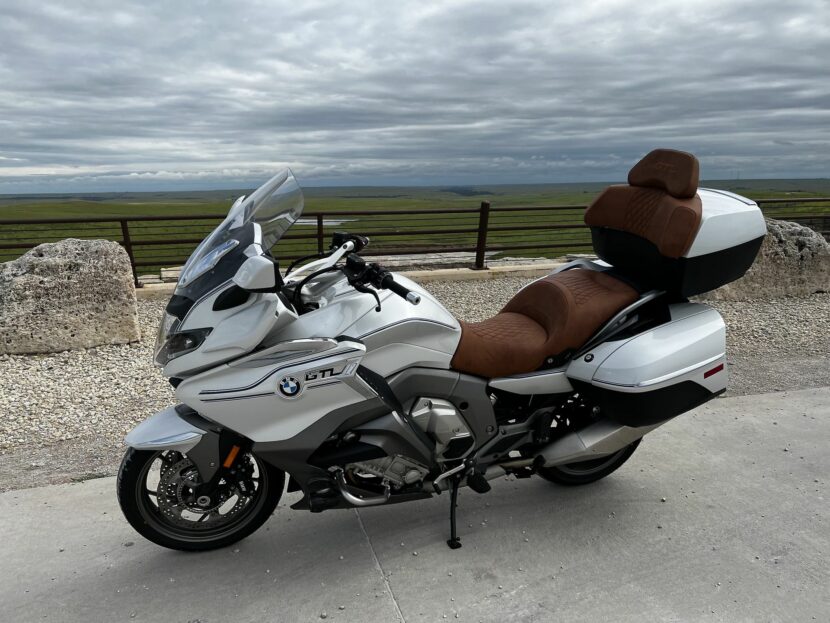
The engine has almost preternatural balance. Place your hand on the tank while the bike is at rest and give the throttle a twist. The tachometer and your ears register the motor revving but there is barely any vibration on the bike. I recently got off the GTL and onto a Ducati Multistrada V4 Pikes Peak, a wonderful bike by any measure with the most advanced of the Italian marque’s engines. It seemed almost coarse in comparison with the BMW’s inline-6.
It’s an absolute honey of a motor, with a smoothness perfectly in keeping with the bike’s overall velveteen demeanor. I’m sure the Motorrad’s boffins could squeeze more power out of this powerplant with little effort, but I applaud the restraint BMW has shown in not overpowering this bike with pointless top-end. Never once did I want for any more juice, even when passing in high gear on the highway, where the bike seems to pull without limit (there’s that plentiful engine torque in action for you). BMW lists the GTL’s top speed as “120+,” and while I didn’t put that entirely to the test, at speeds close to that (for science, you understand) the bike was entirely unflappable.
All that power is delivered to the rear wheel through a 6-speed multi-disc, oil-filled clutch that drives the typical BMW Motorrad shaft. The bike has quick shift (both up and down) that works seamlessly, with a nicely weighted clutch lever, useful for getting the big bike rolling (especially on hills), or if you’re just old-fashioned like me and still enjoy the hand-and-foot ballet of manually switching gears.

The big bike also has BMW’s Hill Start Control to aid with, well, starting on hills, as well as a reverser, useful when parked nose-in on slight down grades. As of yet, BMW hasn’t equipped the GTL with a dual-clutch transmission (as on Honda’s Gold Wing), but between the smooth quick-shifter and the buttery clutch feel, it’s hard to imagine any significant payoff for the engineering effort.
The GTL’s Duolever front-end, unique from the Telelever on BMW’s R 1250 GS and RT bikes, steers with lightness, precision, and accuracy, and provides consistent anti-dive behavior when heavy on the brakes. (The difference between the Duolever and Telelever being that, while the Telelever suspension leaves some load through the bike’s headstock and frame, the Duolever completely isolates the suspension from steering duties.) Steering feel on the GTL is great, progressively weightier as the bike speeds up but lightweight and responsive at slower speeds. In fact, for a bike of the GTL’s size and heft, the delicacy of steering at slow speeds almost seems like a parlor trick.
Underway, the bike is agile and deliberate, and does a better-than-expected job of concealing its mass. While the GTL is most certainly no sport bike, it tracks precisely when leaned over and responds quickly and accurately to all manner of steering input. I’ve loved the handling on any BMW I’ve ever ridden that’s equipped with one of these trick front ends, and the GTL is certainly no exception.
While there is certainly no entirely fooling physics, the giant brakes (four pistons in front, two in the rear) do an admirable job of bringing the roughly 800-lb GTL to a stop with little drama (much of it due to the Duolever’s intrinsic anti-dive properties). The braking is even more sure-footed due to the Motorrad’s Partial Integral ABS, a system which applies the brakes to both wheels when the rider squeezes the hand lever, but only applies the brakes to the rear when the rider presses the foot pedal. It’s a seamless system, with none of the somewhat unnatural feel I recall from the integrated braking on the R18.
A Robust Technology Package

The rider’s primary interface with the bike’s myriad systems is a bright, easily legible 10.25” TFT display, with the various menus and controls accessed through buttons arrayed around the left grip and in concert with BMW’s novel Multi-Controller wheel. I’ve always found this rotary controller somewhat unintuitive when I first use it, but like an iDrive controller on BMW’s car side of the house, familiarity comes quickly with a few twists and pushes.
While I’m still old-fashioned enough to prefer a smattering of analog gauges (as with the gauge cluster on the Honda Gold Wing, or the previous K 1600 for that matter), the GTL’s TFT display is easy to live with and configurable, though as with most large digital panels, it’s prone to washing out in direct sunlight.
All variations in the upgraded K 1600 family are laden with electronic paraphernalia, including Dynamic ESA (Electronic Suspension Adjustment) with automatic load-levelling, integrated navigation (in conjunction with the BMW Motorrad Connected app; more on that later), and BMW’s Audio System 2.0, which, while not at quite the level of the fantastic Marshall system on the R18, provides loud, clear sound with numerous connectivity options (including Bluetooth) for your favorite sound sources (including SiriusXM). There are numerous additional comfort and convenience features as expected on a bike in this class , including standard heated grips and seat, though in the 100-degree Texas heat, I took BMW’s word for it and didn’t give these a try.
Three Ride Modes – Road, Rain, and Dynamic

BMW has kept ride modes on the GTL simple: Road, Rain, and Dynamic. Each adjusts throttle response, engine drag-torque control, traction control, and ESA (suspension) depending on conditions, and are configurable on the fly. I put the Rain mode to the test during a five-hour stint in the pouring rain between Oklahoma City, OK, and Kansas City, MO, and the bike was nothing but stable and sure-footed. In dryer conditions, I found the Dynamic setting to bring the most character out of the bike.
The electrically controlled windscreen is height-adjustable with a dedicated switch on the left handgrip, and I was able to find multiple positions that enhanced comfort in multiple situations. At its lowest setting, plenty of air came over the top lip for cooling, while underway at speed, I found a middle position that blended airflow with calmness (though the top edge made a clean bisection of my sightline, like a non-progressive bifocal lens; my brain adjusted quickly).
At its highest position, the airflow curled up and around and intersected with my helmet to produce an annoying subwoofer-like buffeting, but that’s more a fact of my height relative to the bike than any sort of design criticism. There are also a pair of adjustable fairing-mounted wind deflectors that when extended look a bit like insect mandibles, or maybe the curb feelers from your Uncle Jimmy’s ‘72 Eldorado. Regardless, they redirect oodles of airflow into a rider’s lap, which is most welcome in the summer heat.
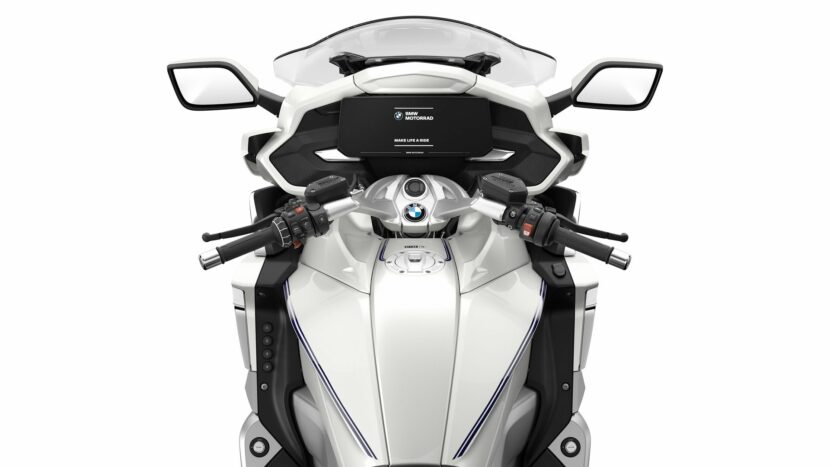
Each of the K 1600 models feature BMW Motorrad’s LED adaptive headlight array, whereby the low-beam LEDs swivel up to 35-degrees into a curve according to the lean angle of the bike, along with a 2-degree up/down deflection to keep the lights level under acceleration and deceleration. This sounds complicated, and it undoubtedly keeps the bike’s IMU on its toes, but in practice it works seamlessly and provides supreme illumination.
The GTL’s 7-gallon fuel tank keeps fill-ups to a reasonable minimum. During my time with the bike, I saw an average of 37.8 mpg, but my throttle wrist tended to want to exercise the wonderful inline-6 more than would be typical for normal touring use, so your results will likely trend towards the higher side.
One small miss is the lack of backlit buttons on the thumb controls and various other buttons. This isn’t a big irritation on the primary controls, but at night the four configurable buttons on the lower left fairing are basically invisible. While this might seem like a small thing, it’s an expected refinement for a bike in this class.
A much bigger miss, particularly on a bike with the GTL’s touring intent, is the lack of an Adaptive Cruise system. Having used such a system on several recent bikes (including BMW’s own R18), I can attest to that system’s utility and function, one which makes long-distance cruising that much more effortless and pleasant. It’s a curious omission on BMW’s part, particularly since they have the system in their parts bin, though I imagine the GTL’s trick LED headlight array takes up the real-estate where the adaptive cruise system sensors would naturally live. But on a bike of this caliber, it’s an obvious upgrade that would have blended perfectly into the cruising role, and I’d expect to see the system on the next iteration of the K 1600 family.
Navigation System Pains
As mentioned, Navigation is built into the GTL’s large, configurable TFT screen. But there are a few significant caveats. For starters, the nav system relies on the BMW Motorrad Connected app, which, while relatively simple to use, isn’t nearly as feature rich as users have come to expect with Google or Apple Maps. The system also relies on a mobile device for its connectivity, so a persistent connection between your mobile phone and the bike is required for the dashboard Nav system to function.
BMW has also engineered a nifty little cooled cubby (with a power-port) at the base of the windscreen to hold your mobile device, but unfortunately the windscreen needs to be fully deployed to access the cubby. And did I mention the windscreen automatically retracts when the bike is turned off, thus trapping your phone in the storage compartment? On more than one occasion, I found myself turning the bike’s power on and off to raise and then lower the windscreen, just to pry my mobile phone out of the compartment, which was a tight fit for my iPhone 13. Additionally, the only wonky buttons on the entire bike seem to be the ones that latch the cover for the device storage compartment, so just getting it to latch correctly was hit-and-miss and a minor frustration.
But…when it all comes together, with the phone in its cubby and the app paired, the Nav arrows and directions on the bike’s screen are legible and responsive and generally helpful, in a simple quick-glance way that’s useful on a motorcycle. So okay. But BMW, really, consider rethinking this entire approach for the next iteration of this machine. Please.
Elegant Design & Colors
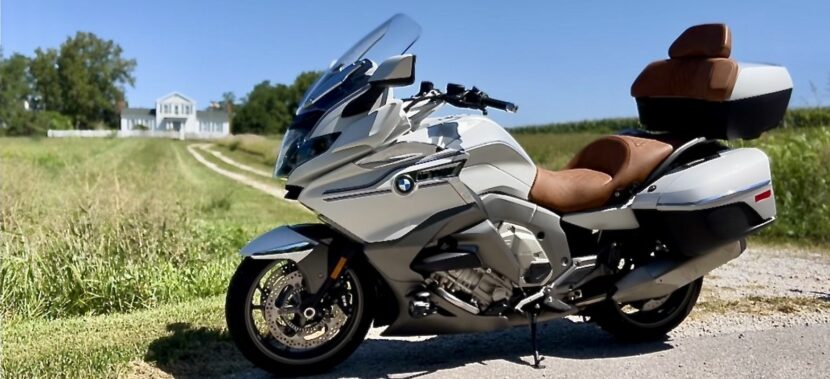
The GTL’s design is elegant, powerful, streamlined, and fully resolved, a flagship Federation Starship in motorcycle form. (Contrast that with the design of BMW’s own venerable GS bikes, which are closer to an attack ship from The Expanse, with their angular, more industrial-rugged design.) More than once while getting fuel, some fellow rider or driver remarked how great the bike looked, and almost everyone also mentioned how plush and comfortable the machine seemed. I was happy to confirm their observations.
The bike is indeed a looker. My tester example was a 2022 model, finished in last year’s available Option 719 choice of Mineral White Metallic with deep navy-blue accent stripes, as well as a delicious saddle brown diamond-stitched seat and passenger backrest, with chrome accents aplenty. For 2023, the available colors are Black Storm Metallic, Gravity Blue Metallic, and this year’s Option 719 choice of Meteoric Dust II Metallic. I’m a little bummed the Mineral White Metallic was only available last year, as it’s a sophisticated, classy color combination. If you feel the same, I encourage you to scour BMW Motorrad dealers for one in stock.
Base price for a 2023 K 1600 GTL is $27,790, with the price of this particular 2022 bike coming in at $31,790 (including the Premium Package, Option 719 paint and seat, and floor lighting options). That’s a hefty price for any motorcycle, but for the small handful of ultra-luxe bikes in this class (Honda Gold Wing, HD Ultra Limited, Indian Roadmaster), it’s in keeping with expectations.
The Complete Touring Package
For riders wanting the most cosseting combination possible of performance and amenities, the K 1600 GTL hits all the marks. From the surprisingly flickable way the big bike handles, to the robust complement of conveniences and electronics, to the locomotive smoothness of the brilliant engine, the GTL is the complete package. I can’t think of a plusher way to gobble up miles, short of a BMW 7-series itself.



